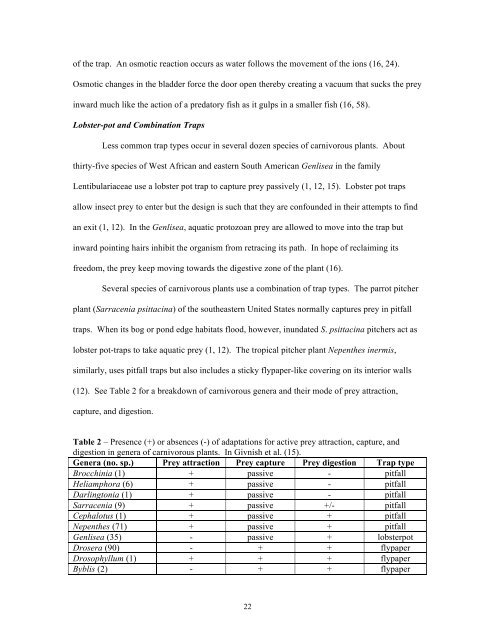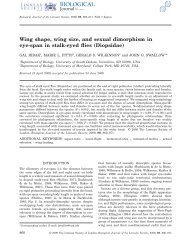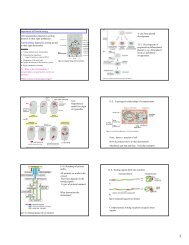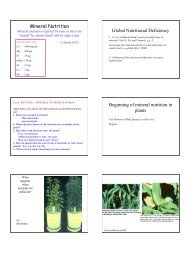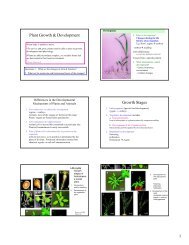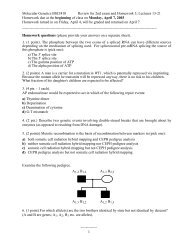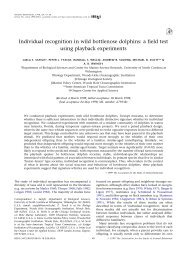Carnivorous Plants and Their Prey
Carnivorous Plants and Their Prey
Carnivorous Plants and Their Prey
You also want an ePaper? Increase the reach of your titles
YUMPU automatically turns print PDFs into web optimized ePapers that Google loves.
of the trap. An osmotic reaction occurs as water follows the movement of the ions (16, 24).<br />
Osmotic changes in the bladder force the door open thereby creating a vacuum that sucks the prey<br />
inward much like the action of a predatory fish as it gulps in a smaller fish (16, 58).<br />
Lobster-pot <strong>and</strong> Combination Traps<br />
Less common trap types occur in several dozen species of carnivorous plants. About<br />
thirty-five species of West African <strong>and</strong> eastern South American Genlisea in the family<br />
Lentibulariaceae use a lobster pot trap to capture prey passively (1, 12, 15). Lobster pot traps<br />
allow insect prey to enter but the design is such that they are confounded in their attempts to find<br />
an exit (1, 12). In the Genlisea, aquatic protozoan prey are allowed to move into the trap but<br />
inward pointing hairs inhibit the organism from retracing its path. In hope of reclaiming its<br />
freedom, the prey keep moving towards the digestive zone of the plant (16).<br />
Several species of carnivorous plants use a combination of trap types. The parrot pitcher<br />
plant (Sarracenia psittacina) of the southeastern United States normally captures prey in pitfall<br />
traps. When its bog or pond edge habitats flood, however, inundated S. psittacina pitchers act as<br />
lobster pot-traps to take aquatic prey (1, 12). The tropical pitcher plant Nepenthes inermis,<br />
similarly, uses pitfall traps but also includes a sticky flypaper-like covering on its interior walls<br />
(12). See Table 2 for a breakdown of carnivorous genera <strong>and</strong> their mode of prey attraction,<br />
capture, <strong>and</strong> digestion.<br />
Table 2 – Presence (+) or absences (-) of adaptations for active prey attraction, capture, <strong>and</strong><br />
digestion in genera of carnivorous plants. In Givnish et al. (15).<br />
Genera (no. sp.) <strong>Prey</strong> attraction <strong>Prey</strong> capture <strong>Prey</strong> digestion Trap type<br />
Brocchinia (1) + passive - pitfall<br />
Heliamphora (6) + passive - pitfall<br />
Darlingtonia (1) + passive - pitfall<br />
Sarracenia (9) + passive +/- pitfall<br />
Cephalotus (1) + passive + pitfall<br />
Nepenthes (71) + passive + pitfall<br />
Genlisea (35) - passive + lobsterpot<br />
Drosera (90) - + + flypaper<br />
Drosophyllum (1) + + + flypaper<br />
Byblis (2) - + + flypaper<br />
22


